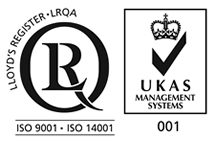
Main Products
Copyright 1998-2025 Firmetal Group All Rights Reserved. | Sitemap
Its characteristic lies in that the specific process of this method is: The high tungsten-tantalum alloy products after hot isostatic pressing are machined to remove the titanium or niobium cladding, then placed in a crucible and filled with sponge zirconium. The entire product is put into a vacuum furnace for primary heat treatment. When the furnace temperature drops to room temperature, the sponge zirconium is taken out, and the high tungsten-tantalum alloy products along with the crucible are put into the vacuum furnace for secondary heat treatment. After cooling, they are taken out of the furnace. The system of the described primary heat treatment is as follows: Hold at 1300℃ - 1450℃ for 1 -3 hours, and maintain a vacuum degree of 5.0×10-1-5×10-3Pa during the heating, holding and cooling processes of the primary heat treatment. The system of the said secondary heat treatment is as follows: hold at 2160℃ to 2200℃ for 2 to 4 hours, and maintain a vacuum degree of 5.0×10-2 to 5×10-4Pa during the heating, holding and cooling processes of the secondary heat treatment.
Tantalum and tantalum alloys start to absorb oxygen above 400℃. Even during vacuum heat treatment, the oxygen content will increase. Oxygen has a solid solution strengthening effect in tantalum and tantalum alloys, increasing their hardness by 1 to 3 times. However, it significantly reduces the plasticity of tantalum and tantalum alloys. Therefore, the solid solution oxygen in tantalum and tantalum alloys, as a harmful element that damages plasticity and toughness, should be reduced or removed as much as possible. In view of this situation, the present invention creatively uses a two-step heat treatment process: First, the hot isostatic pressed high tungsten-tantalum alloy products after the coating is removed are placed in a crucible and filled with sponge zirconium for the first heat treatment under vacuum conditions. The temperature of the first heat treatment is limited to 1300℃ - 1450℃. Taking advantage of the characteristic that oxygen has a relatively low diffusion rate in the high tungsten-tantalum alloy products at this temperature, the tantalum oxides in the high tungsten-tantalum alloy products volatilize. And it has a strong adsorption effect with the surrounding buried sponge zirconium, thereby initially and effectively removing oxygen from high tungsten-tantalum alloy products, while avoiding the melting and failure of sponge zirconium due to excessive temperature. Then the sponge zirconium was taken out and continued to undergo secondary heat treatment under vacuum conditions above 2100℃, with the temperature of the secondary heat treatment limited to 2160℃ - 2200℃. Since the low-valent oxides formed by tantalum and oxygen in the high tungsten-tantalum alloy products had been adsorbed and volatilized during the first heat treatment process, The remaining solid solution oxygen begins to diffuse outward and escape at temperatures above 2100℃, fully purifying the grain boundaries of the alloy in the high tungsten-tantalum alloy products. Meanwhile, the secondary heat treatment enables the high tungsten-tantalum alloy products to form a dense and combined whole through high-temperature sintering, enhancing the intergranular bonding force and releasing the internal stress generated by hot isostatic pressure, significantly improving the plasticity of the high tungsten-tantalum alloy.